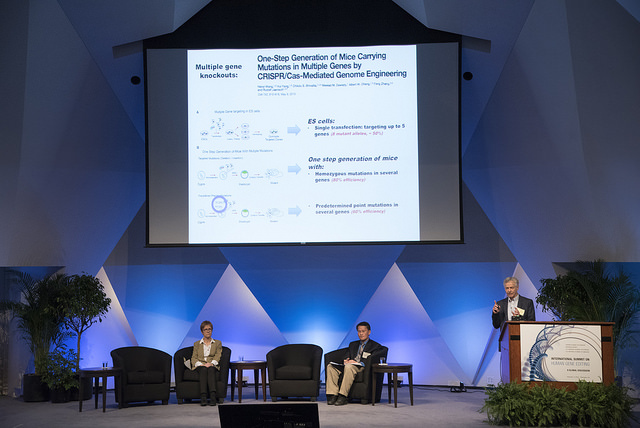
Summit fails to ban genetic engineering of human embryos
Door needs to be left open for further possibilties.

Gene-editing with the four-year-old CRISPR technique is already so promising that a meeting of American, British and Chinese scientists was held in Washington this week to discuss how it should be regulated.
The most controversial item on the agenda was genetic editing of human embryos and germ cells. Chinese scientists have already done this with surplus IVF embryos, although all of them died. Unsurprisingly, the International Summit on Human Gene-Editing declared that it would be “irresponsible to proceed with any clinical use of germline editing” until the risks were better understood. But it failed to endorse even a moratorium on human germline gene-editing, let alone a blanket ban.
Gene-editing has far-reaching uses in basic and pre-clinical research and modification of somatic cells. If embryos or germ cells are edited, it might be possible to avoid severe inherited diseases or to enhance human capabilities.
The summit pointed out that there are many risks, including :
(i) the risks of inaccurate editing (such as off-target mutations) and incomplete editing of the cells of early-stage embryos (mosaicism);
(ii) the difficulty of predicting harmful effects that genetic changes may have under the wide range of circumstances experienced by the human population, including interactions with other genetic variants and with the environment;
(iii) the obligation to consider implications for both the individual and the future generations who will carry the genetic alterations;
(iv) the fact that, once introduced into the human population, genetic alterations would be difficult to remove and would not remain within any single community or country;
(v) the possibility that permanent genetic ‘enhancements’ to subsets of the population could exacerbate social inequities or be used coercively; and
(vi) the moral and ethical considerations in purposefully altering human evolution using this technology.
While recognising the ethical complications, the scientists were reluctant to close the Pandora’s box. “We don’t want to slam the door on this idea forever,” said biochemist Jennifer Doudna of the University of California, Berkeley, one of the scientists who developed the technique. And Harvard’s George Church argued that a ban would be unrealistic because it cannot be enforced. Research will continue in countries where it is not banned.
The need for ethical and regulatory clarity is urgent. The Chinese experiment failed because the editing was sometimes inaccurate. However, a paper published in Science during the week of the conference was a major advance. As Wired commented: “It’s the latest in a series of improvements to the Crispr system that, together, are inching the error rate down toward practically zero.”
https://www.bioedge.org/images/2008images/TH_summit.jpg
Creative commons
https://www.bioedge.org/images/2008images/23198917380_2eede1f374_z.jpg
CRISPR
genetic engineering
- How long can you put off seeing the doctor because of lockdowns? - December 3, 2021
- House of Lords debates assisted suicide—again - October 28, 2021
- Spanish government tries to restrict conscientious objection - October 28, 2021
